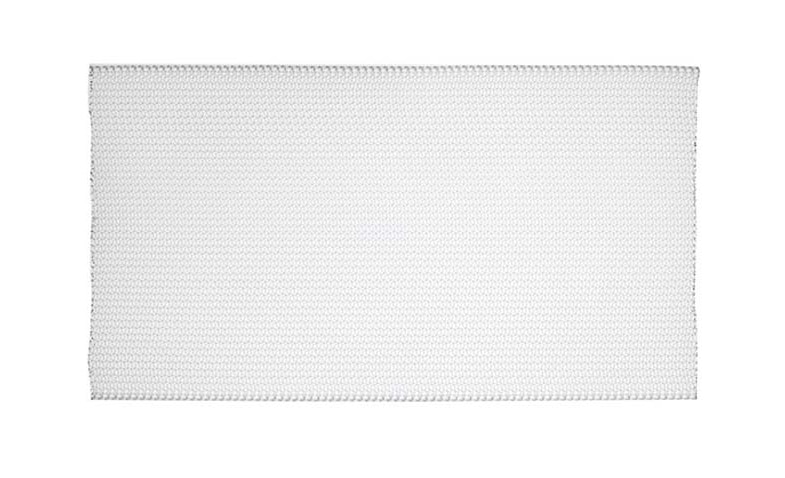

- Overview
- EIFU & Resources
1 Amid, Shulman, Lichtenstein. “Selecting Synthetic Mesh for the Repair of Groin Hernia.” Postgraduate General Surgery. 1992:4:150-155.
INDICATIONS
Bard® Mesh is indicated to reinforce soft tissue where weakness exists, i.e., repair of hernias and chest wall defects.
CONTRAINDICATIONS
Literature reports there may be a possibility for adhesion formation when Bard® Mesh is placed in direct contact with the bowel or viscera. Do not use Bard® Mesh in infants or children, whereby future growth will be compromised by use of such material.
WARNINGS
If an infection develops, treat the infection aggressively. Consideration should be given regarding the need to remove the mesh. An unresolved infection may require removal of the device.
PRECAUTIONS
Intact Bard® Mesh exhibits high burst and tensile strength. However, when custom tailoring, in special circumstances where excessive force is placed on the mesh, the following guidelines may be helpful: When cutting a notch in the mesh, a V-shape with a radiused point will withstand more force than a V-shaped which comes to a sharp point. For best results, it is recommended that the mesh be cut perpendicular to the selvage edge. The inherent tensile strength of Bard® Mesh is strongest in the direction perpendicular to the selvage edges. Doubling the mesh may also increase the strength of the repair. Note: The selvage edges are recognized as the parallel, finished edges with a smooth appearance and slightly raised contour.
DAVOL™ permanent or absorbable fixation devices or nonabsorbable monofilament sutures are recommended to properly secure the prosthesis. If absorbable fixation devices are used, they must be indicated for hernia repair. Care should be taken to ensure that the mesh is adequately fixated to the abdominal wall. If necessary, additional fasteners and/or sutures should be used.
ADVERSE REACTIONS
Possible complications include seroma, adhesions, hematoma, inflammation, extrusion, fistula formation and recurrence of the hernia or soft tissue defect. Erosion and migration of the mesh have been reported in gastric banding procedures.
Please consult package insert for more detailed safety information and instructions for use.
BD offers training resources to help improve your clinical practices as part of our goal of advancing the world of health.
BD supports the healthcare industry with market-leading products and services that aim to improve care while lowering costs. We host and take part in events that excel in advancing the world of health™.
1 Amid, Shulman, Lichtenstein. “Selecting Synthetic Mesh for the Repair of Groin Hernia.” Postgraduate General Surgery. 1992:4:150-155.
INDICATIONS
Bard® Mesh is indicated to reinforce soft tissue where weakness exists, i.e., repair of hernias and chest wall defects.
CONTRAINDICATIONS
Literature reports there may be a possibility for adhesion formation when Bard® Mesh is placed in direct contact with the bowel or viscera. Do not use Bard® Mesh in infants or children, whereby future growth will be compromised by use of such material.
WARNINGS
If an infection develops, treat the infection aggressively. Consideration should be given regarding the need to remove the mesh. An unresolved infection may require removal of the device.
PRECAUTIONS
Intact Bard® Mesh exhibits high burst and tensile strength. However, when custom tailoring, in special circumstances where excessive force is placed on the mesh, the following guidelines may be helpful: When cutting a notch in the mesh, a V-shape with a radiused point will withstand more force than a V-shaped which comes to a sharp point. For best results, it is recommended that the mesh be cut perpendicular to the selvage edge. The inherent tensile strength of Bard® Mesh is strongest in the direction perpendicular to the selvage edges. Doubling the mesh may also increase the strength of the repair. Note: The selvage edges are recognized as the parallel, finished edges with a smooth appearance and slightly raised contour.
DAVOL™ permanent or absorbable fixation devices or nonabsorbable monofilament sutures are recommended to properly secure the prosthesis. If absorbable fixation devices are used, they must be indicated for hernia repair. Care should be taken to ensure that the mesh is adequately fixated to the abdominal wall. If necessary, additional fasteners and/or sutures should be used.
ADVERSE REACTIONS
Possible complications include seroma, adhesions, hematoma, inflammation, extrusion, fistula formation and recurrence of the hernia or soft tissue defect. Erosion and migration of the mesh have been reported in gastric banding procedures.
Please consult package insert for more detailed safety information and instructions for use.
BD-14785